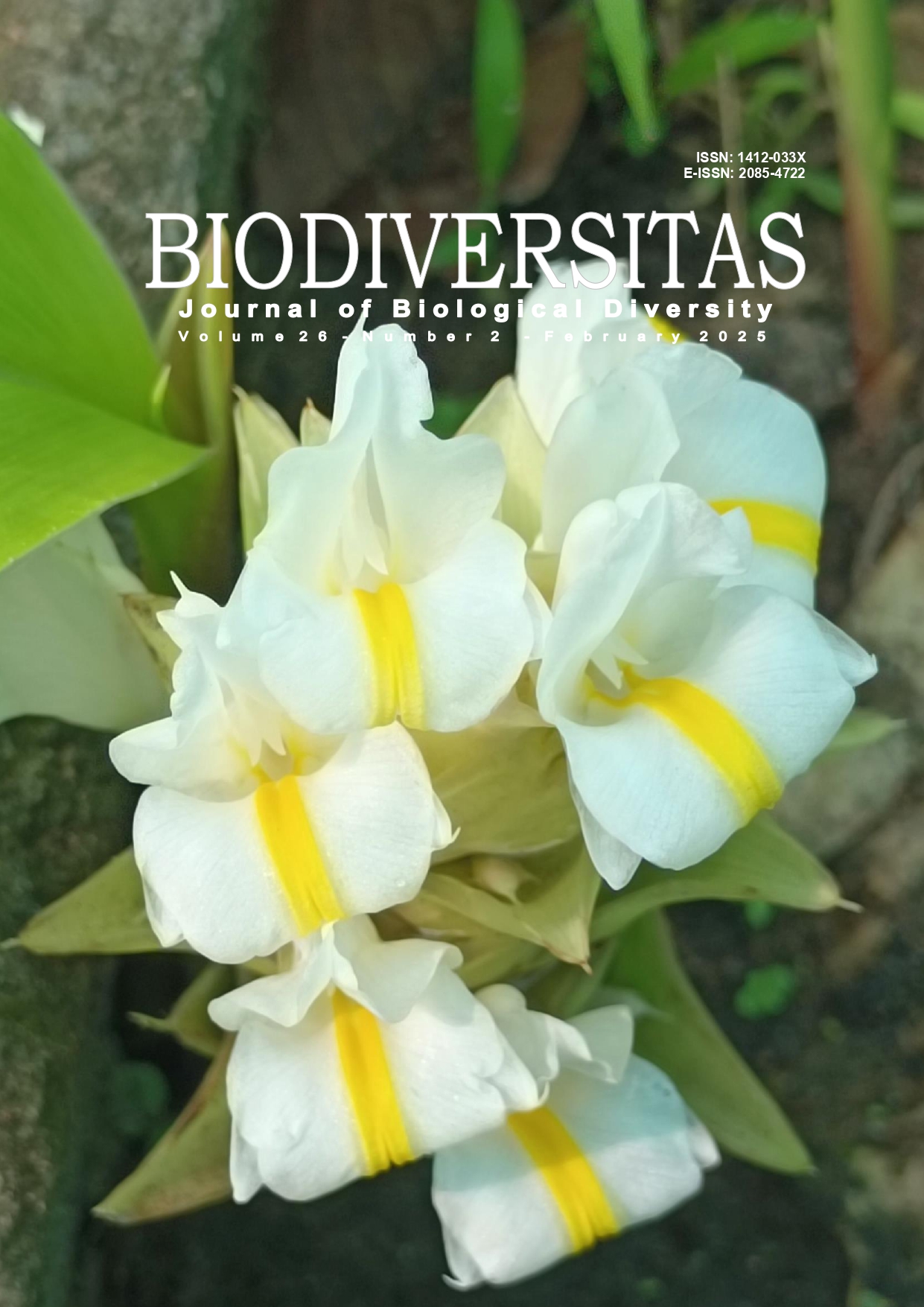Evaluation of antioxidant sources in fermented cocoa pod husk as animal feed
##plugins.themes.bootstrap3.article.main##
Abstract
Abstract. Yunilas, Ramadhani R, Tapotubun AM, Tapotubun EJ, Nasution MIA, Fariani A, Akbar R. 2025. Evaluation of antioxidant sources in fermented cocoa pod husk as animal feed. Biodiversitas 26: 521-527. Cocoa has pods that have the potential to be used as feed. However, before being applied to livestock, fermentation using local microorganisms is necessary. This study aimed to evaluate antioxidant sources in fermented cocoa pod husk as feed for animal science and fisheries. The design used in this study was a Complete Randomized Design 3 x 3 factorial pattern with 3 replicates. Factor I was the dose of LMO (DM1 = 2%, DM2 = 4%, DM3 = 6%) and Factor II the fermentation time (LF7 = 7 d, LF14 = 14 d, LF21 = 21 d). Results showed that the dose of LMO and the fermentation time had a very significant effect (p<0.01) on phenol content and there was an interaction between the dose of LMO and the fermentation time (p<0.01). The dose of LMO had a very significant effect (p<0.01) and the fermentation time had no effect (p>0.05) on flavonoid content and there was no interaction between the dose of LMO and the fermentation time (p>0.05). The antioxidant content of the best fermented CPH in this study is DM1LF14 with a phytochemical screening was alkaloid (+), phenol (++), flavonoid (++), saponin (-), tannin (+), yield percentage 15.20%, flavonoids 0.20% and phenols 0.87%.

